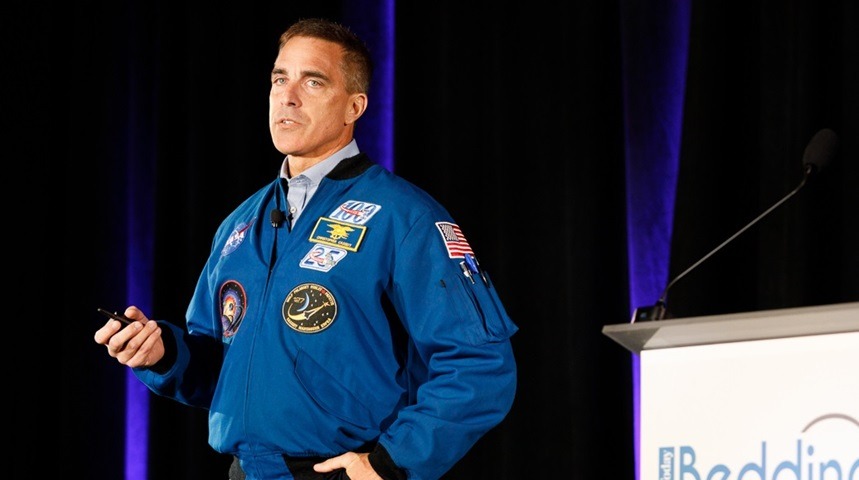HILTON HEAD, S.C. — Great leaders aren’t just born; they’re built over years of learning, training and support from a variety of outlets.
During his keynote address to the 300 attendees at the 2024 Bedding Conference held here, shared three key attributes to building and leading great teams through challenging times:
- Believe in people to give them opportunities for growth,
- Camaraderie can be built during miserable times,
- Make sure everyone on the team understands “commander’s intent” and are empowered to complete the mission.
Cassidy is a retired U.S. Navy SEAL and NASA astronaut whose resume includes leading teams into Afghanistan two weeks following Sept. 11, serving as NASA’s 15th chief astronaut and logging 10 spacewalks.
Today, he serves as the CEO and president of the in Arlington, Texas.
Cassidy took attendees along on his journey to become a Navy SEAL, U.S. astronaut and a leader throughout his military career and beyond. He shared stories of being sent on a mission on the Pakistan-Afghanistan border shortly after Sept. 11 and inspirational tales of his time in space, as well as his high school senior year as he searched for his path.
A misunderstanding with Cassidy’s application process for the U.S. Naval Academy almost derailed his plans to attend the academy and join the military. However, a Cassidy made a trip to the academy and met with a Capt. Mike Melillo to plead his case.
A week later, Melillo called and invited him to attend the Naval Academy Prep School in Rhode Island for a year to transition to the Naval Academy.
“Without that opportunity, I wouldn’t be here,” Cassidy said. “Because of him, I got to attend the prep school as a launch to the academy. I had the opportunity to find mentors throughout my training, SEAL team training and beyond. All of that because someone believed in me and gave me an opportunity.”
A leadership lesson that carries through from Cassidy’s training and is applicable to managing teams and employees is the principle of “commander’s intent.” Using the example of submersible training, Cassidy explained the importance of making sure that every member of the team understands the end goal.
“Once you’re submerged, it’s hard to communicate; the water makes it a real challenge,” he said. “That makes it important that individuals are empowered to make decisions and take risks based on the commander’s intent.
“That applies to all of us,” Cassidy said. “If you’re out in the world and trying to sell or represent your company and the leadership of your organization trusts you, you’re empowered to make decisions and be successful.”
The message: Train teams and empower them to do the job.
Cassidy’s SEAL team training was a six-month process during which he developed a strong bond with is fellow trainees. That camaraderie, especially during the first week, is what makes the training survivable, he said.
“Knowing that your team is miserable together, those shared experiences give them the ability to carry on as a core unit,” Cassidy said. “It helps strip the ‘I’ out of groups and build the group back up to a ‘we.’”
Cassidy wrapped up his presentation by tying leadership to a mission.
“Any leadership includes people trying to complete a mission,” he said. “It doesn’t matter if it’s a mission on a battlefield, a flight in space or raising money for a non-profit. It’s about empowering people to align all the energy in one vector.”

